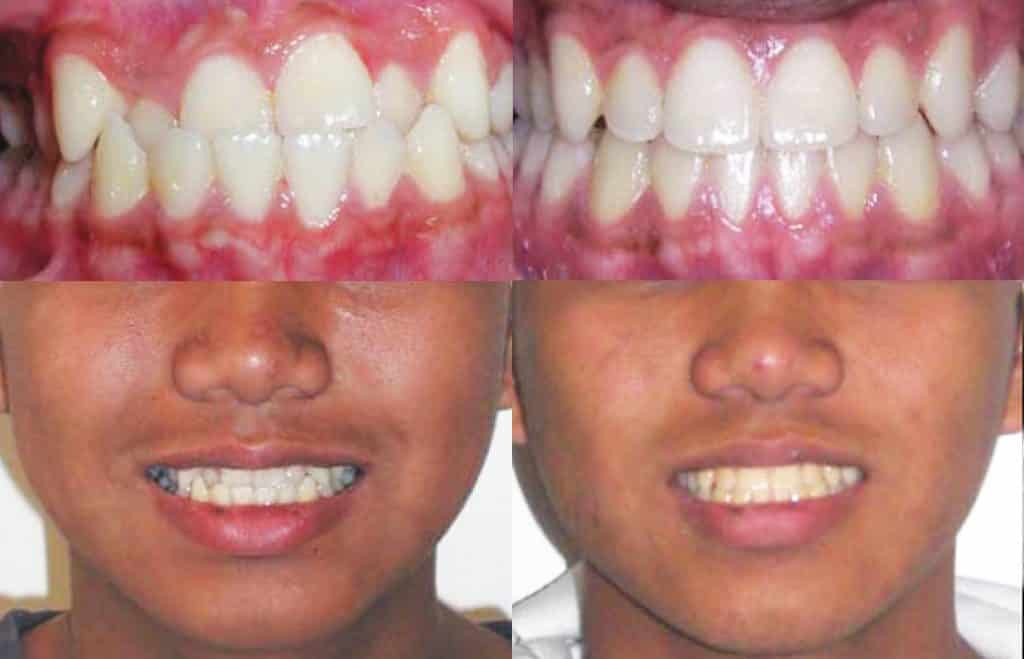

In other instances, certain oral habits are the reason behind spaced out teeth. Some people have gap teeth from an accident or sports trauma that caused teeth to fall out.

Excessive gum tissue, which is typically genetic as well, can also lead to separation and a gap in the front teeth. Gaps in your teeth are pretty easy to see and feel, but how did they get there? W hat causes them? Spacing can be genetic and can happen because your teeth are too narrow for your jaw or your jaw is to wide for your teeth. This can lead to uneven wear, jaw pain such as temporomandibular joint disorder (TMJD), and even the deterioration of your jaw bone. You might also want to know that spaced out teeth aren’t in the correct position for an aligned bite. Gaps also create more areas for plaque, bacteria, and food debris to hide, making you more susceptible to gum disease and tooth decay. We know a gap between teeth can make you feel self-conscious, but spacing isn’t just a cosmetic concern. Simply put, gap teeth is when there’s too much room in the jaw and there are one or more gaps between teeth.
INVISALIGN BEFORE AND AFTER GAPPED TEETH HOW TO
To find out more about Invisalign and what it can do for you, contact Coscarella Family Dentistry today.Are you worried about gaps between your teeth? Tired of hiding your smile because your spaced out teeth make you feel self-conscious? Are you wondering how to close gaps in teeth? The good news is, gap teeth is one of the most common problems when it comes to tooth alignment and can be treated with Sensational Smiles’ at-home Invisalign ® treatment. The Invisalign treatment Windsor, Ontario really trusts comes from a reliable family dentist. Small gaps may take as little as six months. Invisalign is recommended for gaps up to 6 millimeters, which take about 24 months to correct. The exact treatment time varies based on the size of the gap. If your gap is the result of a missing tooth, you should ask your dentist about alternative options to replace the absent tooth and improve the alignment of surrounding teeth that way. Invisalign spacers are very helpful for correcting small gaps in teeth, but may not always completely resolve large gaps.

How Long Does Invisalign Take to Correct a Tooth Gap? Almost all crooked teeth respond to Invisalign very well. It takes about 12 months of treatment for the average patient to straighten crowded teeth, whether on the top or bottom dental arch. It is an effective, pain-free, and fast solution. Invisalign is great at correcting crowded teeth. How Long Does Invisalign Take to Correct Crowded Teeth? Let’s take a closer look at some common questions: However, almost anyone can have excellent results by using Invisalign as directed and visiting the dentist regularly. Younger patients generally see results a little sooner than adults, and those with more severe conditions take longer than patients with minor misalignment. In general, it takes about 12 to 18 months for final results to be apparent in the mirror. Every day you wear your spacers, subtle changes are happening in the position of teeth. The time it takes for Invisalign to help with any given condition can vary. Over time, Invisalign can correct most cases of crowded teeth or gaps between teeth. Like braces, Invisalign spacers exert gentle pressure on the teeth to move them into a healthier alignment. They’re also convenient, letting you remove them any time for easy cleaning. People prefer Invisalign because they are so subtle, your dentist may be the only person who knows you have them. Only patients with the most severe orthodontic problems don’t qualify! It can be effective for most patients of any age who can commit to wearing the clear plastic spacers for at least 22 hours every day. Invisalign is a popular alternative to old-fashioned wire braces that’s enjoyed by adults and teens alike.


 0 kommentar(er)
0 kommentar(er)
